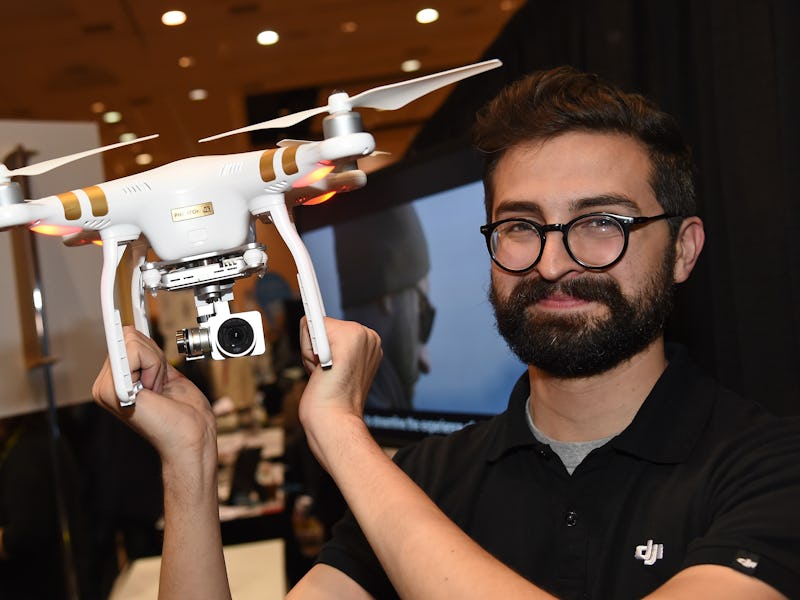The Smart Amendment Would Separate "Semi-Pro" Micro Drones and the FAA From Each Other
Proposed legislation fills gap in the way the federal government views quadcopters.

Good news for semi-professional quadcopter photographers (a surprisingly large group of people if you look into it): A proposed amendment from House Representative Rodney Davis (R-Ill.) would create a new legal classification for drones under 4.4 pounds, making them “Micro Unmanned Aerial Systems” and exempting them from full-blown Federal Aviation Administration flight restrictions.
Civilian drones, in the eyes of the American federal government, currently come in two stripes. They’re either hobbyist toys, flown for fun, or commercial aircraft weighing up to 55 pounds. As the real estate agent who wants to take promotional aerial photographs knows, there’s a third path: Lightweight drones, typically quadcopters, that aren’t exactly recreational. Given that the FAA freely admits it’s overwhelmed by the number of UAV pilots currently looking for exemption, coming up with a way to handle these UAVs makes sense.
Davis’ amendment could pave the third path into reality. It passed the first Congressional hurdle on February 12, when the House Transportation Committee approved H.R. 4441, the Aviation Innovation, Reform, and Reauthorization (AIRR) Act, which includes the micro drone proposal. The Illinois representative cites exemptions for drones that weigh under two kilograms (hence, 4.4 pounds) in Canada, Mexico, and Australia as precedent, arguing the U.S. has fallen behind other countries.
Influential members of the drone community have embraced the amendment. Attorney Peter Sachs, who runs the Drone Law Journal, came out strongly in support, calling it a “giant step” forward in an essay:
“The amendment proposes replacing a scheme of ‘regulation by exemption’ that discourages compliance, with regulation that encourages it. It would make the skies safer by regulating micro drone operations in a manner that all pilots could easily understand and abide by, by replacing the complex and onerous existing path to non-hobbyist flight with a streamlined, easy-to-understand, sensible and safety-oriented regulation.”
This isn’t a complete micro free-for-all: Such devices would have to stay under 400 feet, keep speeds below 40 knots, stay in line of sight and fly only during the day, and stray no closer than five miles from airports. And whether you want to fly your 4.4-pound micro drone as part of your photo business or as an amateur drone racer, you’d still have to spend $5 to register with the FAA, joining 300,000 other drone pilots.
Update: An earlier version of this post noted that the Academy of Model Aeronautics describes the proposed legislation as “a strong bill we are proud to support.” To clarify, the AMA has not come out expressly in favor of the micro UAS amendment, but rather the bill’s special rules for community-based model aircraft guidelines.